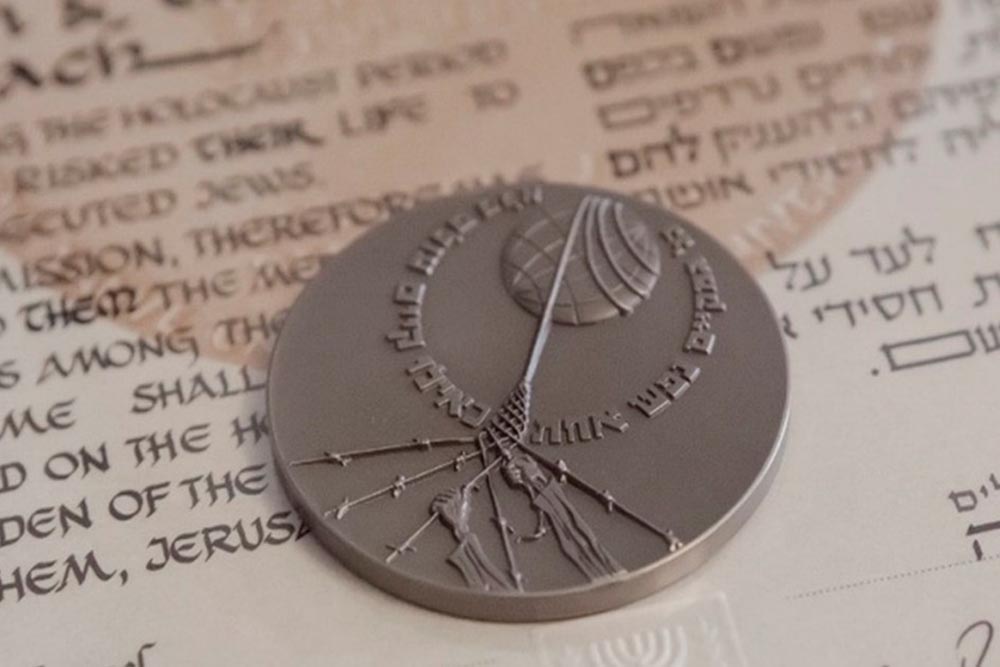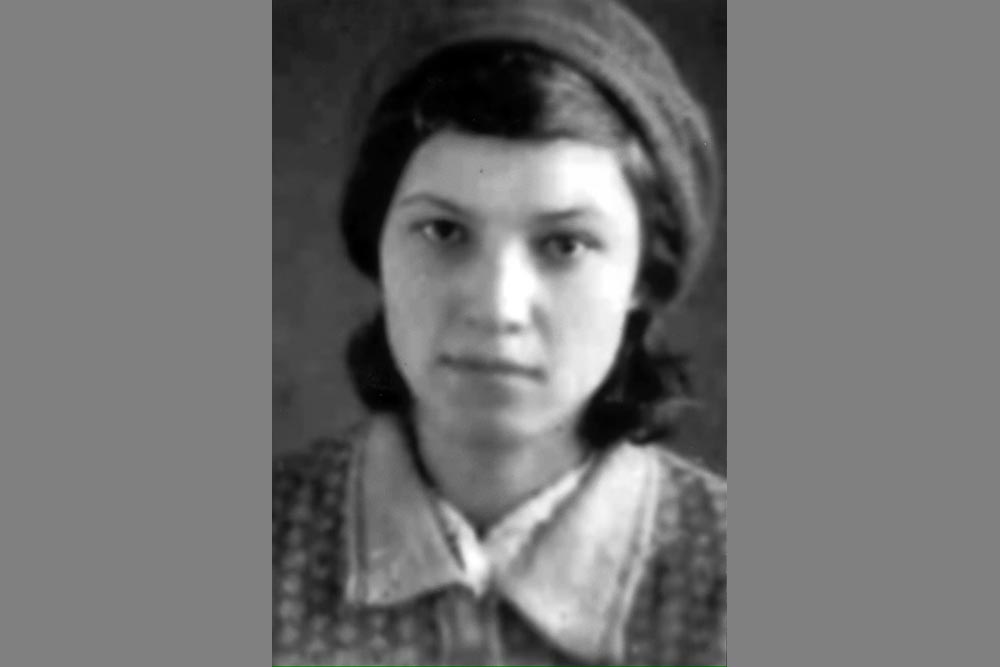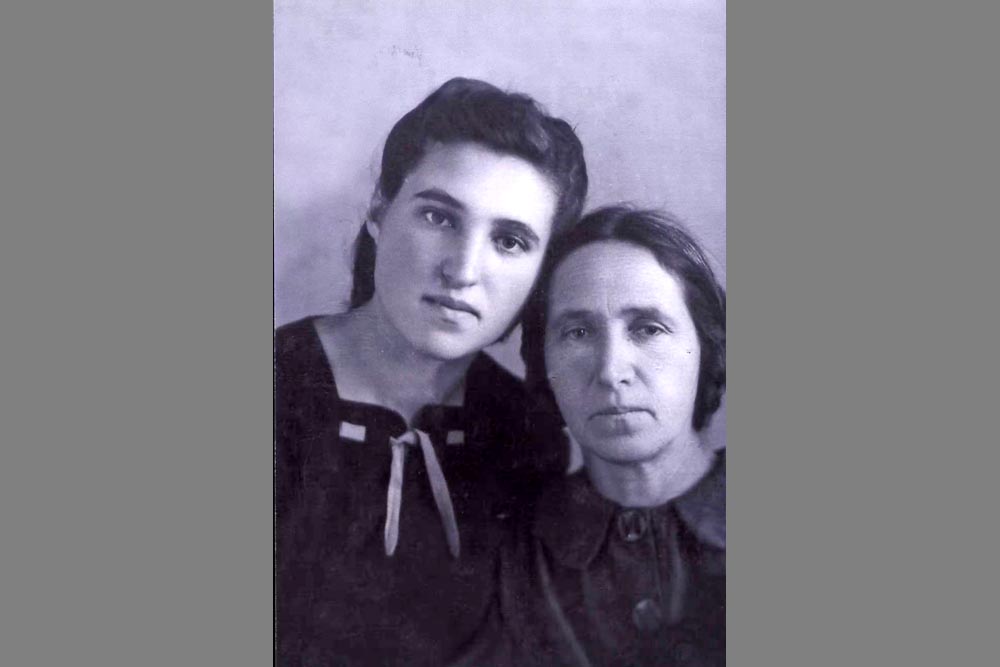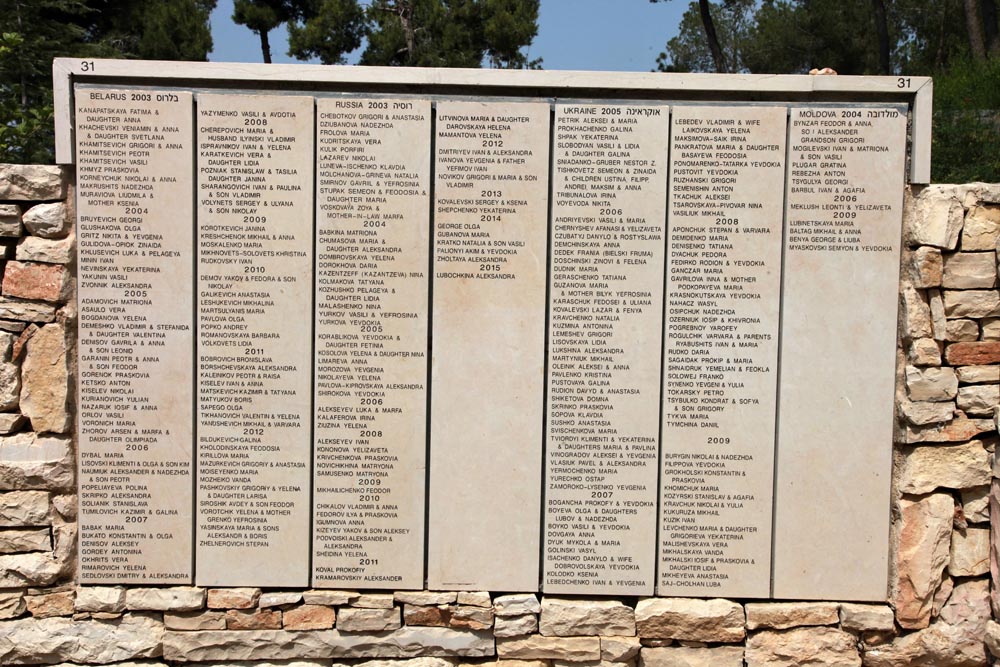Bank of Portraits / Havrylova Inna, Podkopaieva Mariia

Havrylova Inna, Podkopaieva Mariia
Mariia Podkopaeva lived in Voroshilovhrad (current – Luhansk) with her daughter Inna Havrylova and mother Yulianiieia. In the early 1930s, the Jewish Kiselhof family settled near them. Father Saul was a blacksmith, mother Tsylia was a saleswoman, and children Semen and Rakhil were high school students. Inna studied in the same class as Rakhil. In their school years, they were close friends, but with the beginning of the German-Soviet war, they hardly communicated. Each family adapted to life in the conditions of hostilities in its own way.
On July 17, 1942, German troops entered the city. Already from the first days of the occupation, they began to establish a "new order". Dozens of announcements appeared on the streets that regulated life. One of the first was the order for mandatory registration at the German labor exchange for all residents over the age of 13. Almost 100 thousand citizens filled out registration forms with items on nationality, party affiliation, criminal record, etc. Among other things, this is how the new authorities discovered all the Jews in the city. According to the occupation announcements, they were deprived of all rights and, regardless of their age, they had to wear a band with a yellow star on their clothes. Disobedience is punishable by death.
The life of three women in the occupied city of Voroshilovhrad was difficult. There were not enough funds even for food. Nevertheless, Mariia and Inna sympathized with the Jews they knew, because they knew about all the restrictions and persecutions, about the hard work to which they were sent. Moreover, already at the end of July 1942, the townspeople were horrified by the punitive actions. The first victims of the Nazis were about 300 Jews – mostly women and children over the age of four. All of them were shot in a pit on the outskirts of the city.
One day there was a knock at Mariia's door. It was Rakhil Kiselhof. The girl asked to protect her and her family. Although Inna and Mariia themselves lived in poverty, sometimes they found themselves on the verge of starvation, they accepted the persecuted and hid them in a modest apartment for three days, thus saving them from death.
Having recovered a little, Rakhil told her friend about her military life. In June 1942, when German troops were approaching the city of Voroshilovhrad, Semen's older brother was mobilized into the Red Army. The rest of the family wanted to evacuate to the eastern regions of the USSR, but when they reached the city of Rostov-on-Don, they realized that the front was already ahead and the way was blocked. At the beginning of August 1942, the Kiselhof family returned to their hometown. They found out that a former neighbor occupied their apartment. “You're still going to be killed”, – she said, preventing them from even taking their belongings. An elderly Jewish couple they knew invited the Kiselhof family to stay with them. The next day, they registered with the Judenrat and received a job referral. For three months, Rakhil and her parents were sent to hard work, and for improper performance, they were punished and humiliated. When the order appeared for all Jews to come to the stadium on November 1, 1942, allegedly for resettlement, the Kiselhof family understood its hidden meaning. 17-year-old Rakhil said she only wants one thing – to live; and her father, weakened by hard work and malnutrition, no longer had the strength to fight. Therefore, he said goodbye to his wife and daughter and went to die. Rakhil and Tsylia rushed to seek help from their Russian friends, but were refused. The second attempt was also unsuccessful. Only on the third attempt, the Havrylova-Podkopaieva family sheltered them.
Meanwhile, the Nazis shot those Jews who came to the stadium and those whom the police found in various hiding places – about 2 thousand people in total.
As the Nazis continued to search the city for surviving Jews, Rakhil and her mother contacted relatives who were also in hiding, and together they decided to flee. The rescuers said goodbye to the fugitives, having collected food for them on the way. For more than a month, Rakhil, Tsylia and their relatives wandered around the neighborhood until they ended up in a front-line village Skorytske (current – Voronezh region). They pretended to be refugees from the war, and the village authorities, fortunately, did not demand identification documents. On January 14, 1943, German troops retreated from the village, and the Kiselhof family evacuated to the city of Omsk, which became their new home.
Having settled in a new place, Rakhil contacted her rescuers. In her letters, Inna Havrylova told her friend about how the city is gradually returning to a peaceful life. Inna herself entered the university in 1944. Unfortunately, the friends did not meet again. In the mid-1940s, Inna fell ill and died soon after. In 2006, Rita (Rakhil) Moldovanova (Kiselhof) asked Yad Vashem to honor the women who saved her life. In 2008, Inna Havrylova and her mother Mariia Podkopaeva were recognized as Righteous Among the Nations.
Svitlana Datsenko
Kyiv
National museum of the History of Ukraine in the Second World War
-
fingerprintArtefacts
-
theatersVideo
-
subjectLibrary



